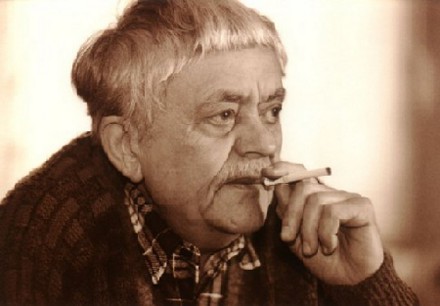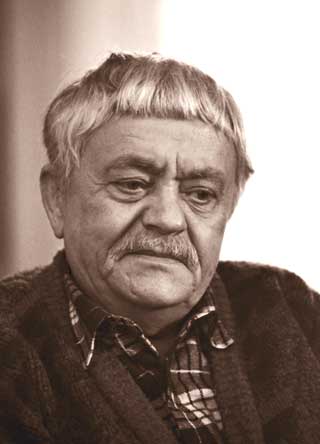
Géza Pogány painter
Géza Pogány was born on 2 August 1927 in Szombathely. In 1945 he graduated from secondary school and for the next two years he attended the College of Forestry in Sopron, followed by the Technical University in Budapest. From 1947 to 1950 he studied at the College of Fine Arts, Budapest. As a student of Aurél Bernáth and Rezső Burghardt, his talent quickly became apparent, but his studies came to an abrupt end for political reasons. Subsequently he worked (often by night) for 9 years - as a kind of punishment - in the Opera, first as a labourer, later a scene-painter.
In 1959 he went back to his profession and left the Opera: it was a good period in his life. He painted ceaselessly and had to organise exhibitions himself as he was hindered by the regime.
From the 1960s he visited several European countries and took part in study tours. Successful independent exhibitions were organised for him, which were a great opportunity to introduce his work to the wider public.
In his memoirs, he counted his most fruitful period as a painter from 1962. Among his artworks are many still-lifes, landscapes, reliefs, and many artifacts in public areas. His crystal compositions are unique: he used real minerals and semi-precious stones on them. On his plastic works he liked using metals, textiles, ferrosilicon, glass, red copper. His entire career was influenced by his religious upbringing: he made countless artifacts of sacred subjects. His most impressive work is The Arrival of the Holy Ghost, a 60 square metre altarpiece (Budapest Remetekertváros Szentlélek Templom), which is a worthy memorial of the artist's hands. Géza Pogány is a versatile, creative artist. His every artifact invites us on an unforgettable journey during which we have an opportunity to get to know his attitude to life, his inner world. Those who take part in this journey can become participants in an extraordinary adventure.
APP

Reminiscence
I remember as a child I used to stay or sit behind my father for a long time while he was working. I watched how simple lines became patches, patches became shapes, and finally the shapes completed the artifact at the end. Afterwards my father applied a layer of varnish onto the finished work, and tried to fit it into a frame. While doing this, he always humorously quoted the words of his master, Aurél Bernáth: "in the finished artwork 80% is the frame, 10% is the glass and the rest is the painting".
Painting was not only a job for him, but a passion. I remember for example in the family album the "red eye effect" was eliminated by him. If somebody had shut their eyes on the picture or the eyes were simply red, he drew or painted false eyes onto the photographs to correct them. The angular walls of his mansard studio were beautifully painted with his personal cave drawings. When he tried to explain something to us, he often literally illustrated his points: on these occasions elaborate sketches were made by his hands in a few seconds.
In his adventurous life (he experienced the Second World War, the Revolution of 1956 and the darkest years of communism) he could achieve significant success despite oppression and other difficulties. He left behind an extremely rich life-work, including several monumental artifacts in public places, a wealth of beautiful paintings, and many book illustrations; not to mention the numerous exhibitions he took part in, or organised himself abroad or occasionally at home. He passed away before the opening of his last exhibition, but he lives forever through his artifacts.
AP

